The jewellery of the Jazz Age
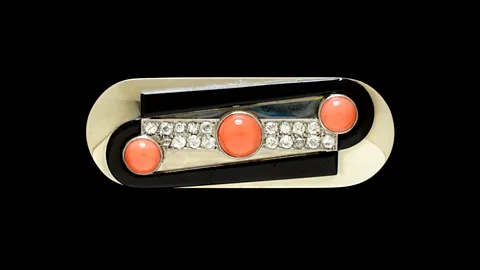
The bold Art Deco style signified all things modern, daring and sleek – it still resonates today, writes Lindsay Baker.
Synonymous with Gatsby-style glamour and the Jazz Age, the bold, sleek Art Deco era was a game-changing time in design. Its angular, geometric aesthetic celebrated the exciting new worlds of industry, speed, mechanisation and technology. It was a uniquely lively and eclectic time in design, and spanned the opulent, ‘Roaring 20s’ to the more austere 1930s.
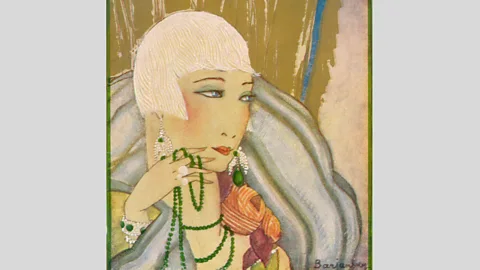 Alamy
AlamyArt Deco design has endured like no other style, and it is in jewellery that the era’s influence has proved particularly lasting. Having re-emerged over the decades, jewellery inspired by the Art Deco era is once again enjoying a revival today – the bold, innovative sensibility of the time has been hard to miss in recent years, both in fine jewellery and costume styles.
So what was it about Art Deco jewellery that set it apart and made it significant? “The Art Deco style really is about modernity,” Dennis Nothdruft, senior curator at London’s Fashion and Textile Museum, tells BBC Culture. “The jewellery of the period encapsulated the elements of the style in such a clear and exquisite way – geometries, sleek lines, shine and sparkle. It was such sophisticated work and perfectly set off the fashions of the day.”
 Christie's
Christie'sOriginally called ‘Style Moderne’, the new design aesthetic was famously showcased at the International Exhibition of Modern Decorative and Industrial Arts in Paris in 1925. And even before this, some jewellers had already been forging the new look – as Nothdruft explains: “I find Cartier the classic Art Deco jeweler. As a company they were already exploring modern styling before the Art Deco exhibition, what they went on to produce were classics of the era. Beside the jewellery, things like cigarette cases and watches were also masterpieces in miniature.”
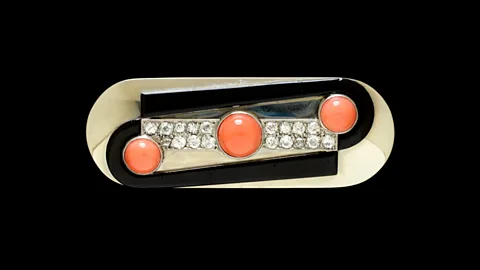 V&A / American Friends of the V&A
V&A / American Friends of the V&AAnd the look keeps re-emerging, Nothdruft adds: “As a style, the Art Deco cycles through periodically. It always signals sophistication and glamour. . . What does change is how jewellery is worn – perhaps layering pieces instead of one necklace or one bracelet.”
After the detailed intricacies and excesses of the Art Nouveau style, the abstract, clean, angular lines of the Art Deco era marked a new, daring sensibility and drew heavily on the dynamic mood of the newly mechanised urban world. Typical of this structured, geometric look is the jewellery of Raymond Templier, some of which is in the permanent collection at London’s V&A Museum, including a brooch from around 1930. Templier commented in the Goldsmith’s Journal at the time: “As I walk in the streets I see ideas for jewellery everywhere, the wheels, the cars, the machinery of today.” He was known as ‘the architect of the jewel’.
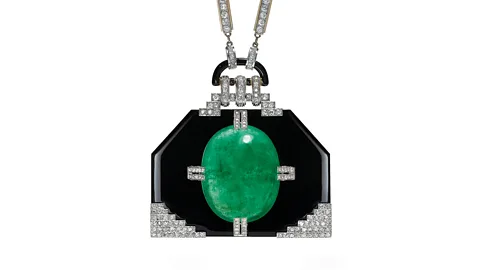 Christie's
Christie'sThe Art Deco jewels were typified by sleekness and sharpness of edges, with a regularity about the lines, surface and volume. Interesting and unusual blends of gems and materials were introduced for the first time, with natural materials such as onyx, rock crystal, jade, ivory and silver, combined with man-made ones such as glass and plastic. By the end of the 1920s, a pared-back, icy look became fashionable, and minimalist rings appeared, with a rigour and severity about them. The favoured metal was platinum, and because of its strength, less was needed, giving great prominence to the gems.
A clean break
A recent sale at Christie’s, Beyond Boundaries: Magnificent Jewels from a European Collection, showcased some of the era’s most outstanding pieces. It showed how the end of World War One ushered in a rejection of the excesses of the Edwardian and Belle Epoque eras. It was a time of great change and upheaval and the Art Deco design movement emerged from the chaos of war presenting a clean sweep.
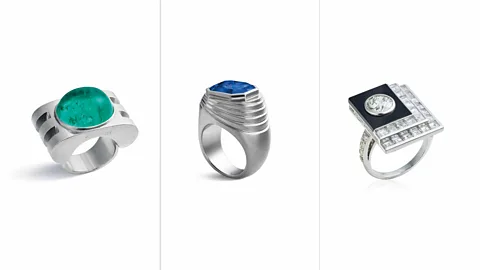 Christie's
Christie's“While designers came from diverse backgrounds, they all held the same ideal: to make a clean break from the past, draw inspiration from everyday life, and rid the decorative arts of useless ornamentation,” says Laurence Mouillefarine, a historian of the Art Deco era. Along with the artists and architects of the time, the master jewellers of the era worked on developing the connection between form and function. Cartier, Van Cleef & Arpels, Paul Brandt, Raymond Templier and Fouquet are among the jewelers who created masterful, geometric looks, from a stunning Deco sapphire ring by Raymond Templier, to an emerald ring and a diamond-and-onyx ring both by Jean Fouquet, all recently sold by Christie’s Geneva.
In later-period Art Deco, structural clips and double-clip brooches became fashionable, and along with an emphasis on geometric design, there was also a focus on contrasts in colour, and rock crystals were often set beside diamonds, heightening the gem’s sparkle. Egyptian, Chinese and Japanese art and motifs were also an inspiration, with the frequent inclusion of coral, enamels, pearls, lacquer and jade. Some designs even lifted – or appropriated – motifs from Asian art.
 Christie's
Christie'sJewellery specialist at Christie’s auction house Raymond Sancroft-Baker says: “After WWI people wanted to embrace the new. Art Deco took hold, and Cartier was at the forefront of innovation. It introduced the Tank watch in 1917 and, after Jacques Cartier had travelled to India in search of gemstones, ‘Tutti Frutti’ jewellery, which became very popular in the 1920s. One must that jewellery is after all a fashion ornament, and having the latest design is always important.”
Sancroft-Baker explains that Jacques Cartier first visited India in 1911 and, through his buying agents in Delhi, Calcutta and Bombay, managed to acquire Indian rubies, sapphires and emeralds, carved with floral motifs, at modest prices. “The workshops in Paris assimilated Indian designs into a new style of multi-gem jewels that were far removed from the typical severity of purely diamond-based Art Deco jewels,” he says. “The genre reached its crescendo with a stunning necklace, the ‘Collier Hindou’, which was commissioned in 1936 by the heiress to the Singer sewing machine company, Daisy Fellowes.”
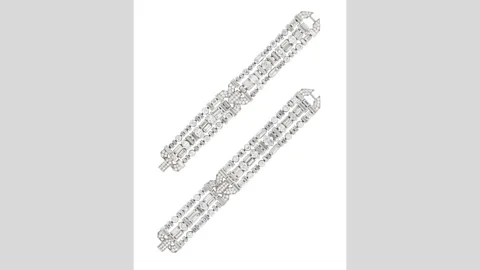 Christie's
Christie'sCartier items from the era are highly collectible – a sleek diamond, emerald, enamel and onyx bracelet, made for the Paris Exhibition of 1925, was also sold through Christie’s recently. And a pair of streamlined Art Deco diamond bracelets by the jeweller, originally from the collection of Doris Duke, sold in 2017 for nearly $1 million (£706,000) at Christie’s New York.
Also a fashionable choice in the 1920s and 30s was Tiffany, bringing new diamond cuts, contrasting round and baguette brilliant diamonds clustered together in stylised blooms. Tiffany pearls worn several ropes together were particularly popular, with the long strands layered elegantly by the chic flappers of the time. Tiffany now takes a contemporary approach to Art Deco principles, maintaining the geometry and fluid settings of the sleek originals, and the jeweller’s Art Deco inspired pieces today are among some of their most popular items.
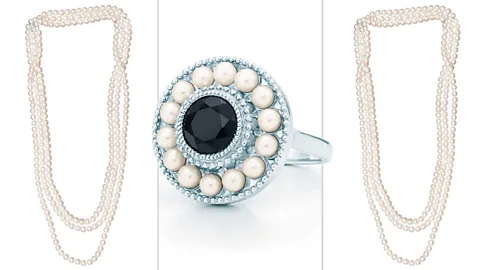 Tiffany
TiffanyTiffany’s yellow-diamond ring features a large gem in platinum, bedecked with round-and-baguette white diamonds is clearly inspired by the era. Also influenced by its own 1920s creations is a collection inspired by the iconic Zeigfeld Theatre, including a sterling silver ring with a round black-onyx and freshwater cultured pearls.
 Carat London
Carat LondonJewellery designer Carat London is also among the broad spectrum of accessible, independent brands now influenced by Art Deco sensibilities. Heidi Thompson, creative director of Carat London is inspired by the “architecture and décor” of the era, she tells BBC Designed, particularly in the brand’s Chrysler collection. “Obviously the iconic Chrysler building in New York City was the main inspiration. Our mood boards included patterns from not only the exterior of the building but also the wallpaper, geometric compositions in paintings and furniture, and the beautiful details of the wrought iron gate.”
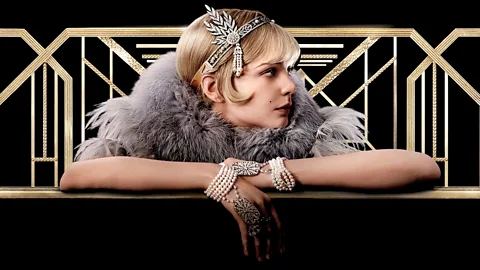
So why does Thompson think this style of jewellery resonates so much now? “Fashion is an eternal renewal, and Art Deco is one of the most chic and feminine periods in fashion history. This era speaks to women of all ages and reminds us of the opulence of great parties and beautiful dresses. Every woman dreams of having a Gatsby moment.”
